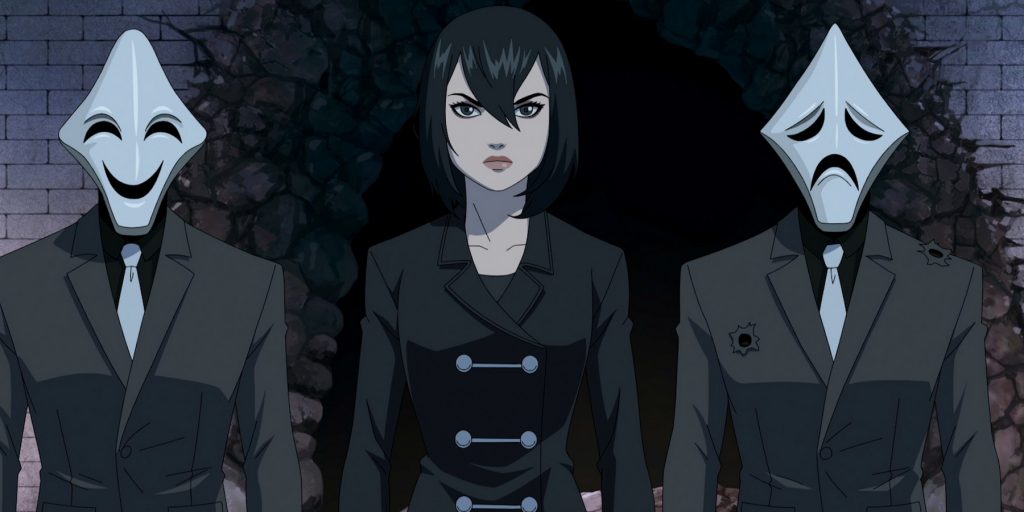Netflix’s animated series Trese is one of the most-anticipated shows in the Philippines, especially as it is set in Manila and features a wide range of supernatural creatures that come straight out of Filipino mythology. Coupled with the fact that the series features an impressive cast – including Shay Mitchell and Liza Soberano as the English and Filipino voices of Alexandra Trese, respectively – Trese is definitely a show that Filipino fans are eager to see.
While the hype may be through the roof, I’m sure many people want to know if the series is good. After all, there are only six epsiodes that are just around 30 minutes each. This might be a bit too short to give justice to the source material. Plus, given that Trese is the first of its kind (in that it’s an animated series centered on Filipino folklore), we’re sure that a lot of Pinoy viewers are hoping that the show lives up to it promise.
Yes, Trese is a must-watch, especially for the Filipino audience!
A Tale of Awangs and Tikbalangs
 In case you’re unfamiliar with the Netflix show’s premise, Trese is an animated series adaptation of the Trese comic by Budjette Tan and Kajo Baldisimo. The show follows Alexandra Trese, a private detective that often helps in solving various cases involving the supernatural. As it is set in Manila, these supernatural events are often caused by tribes and figures from Filipino folklore, including Tikbalangs, Duwendes, and more. Along with solving cases, Trese also mediates conflicts between the various supernatural tribes; this helps keep the balance of the world of humans and the underworld.
In case you’re unfamiliar with the Netflix show’s premise, Trese is an animated series adaptation of the Trese comic by Budjette Tan and Kajo Baldisimo. The show follows Alexandra Trese, a private detective that often helps in solving various cases involving the supernatural. As it is set in Manila, these supernatural events are often caused by tribes and figures from Filipino folklore, including Tikbalangs, Duwendes, and more. Along with solving cases, Trese also mediates conflicts between the various supernatural tribes; this helps keep the balance of the world of humans and the underworld.
Most of the series’ episodes have a standalone case that Trese solves (kind of like a monster-of-the-week series), but each part has elements that add up to a larger narrative that’s fully explored in the sixth and final episode.
Now, before I share my thoughts on the overall narrative, I want to first praise the handling of the more standalone episodes. As a fan of episodic anime shows, Trese’s first five episodes worked incredibly well for me. I found them to be compelling to watch thanks to their interesting stories, as well as the fact that they even explore some thought-provoking themes that are relevant today. For instance, an episode explores the role of the police in our society, especially in the context of the Philippines where cases of police brutality continue to happen.
Aside from these themes, the cases that Trese solves are highly engaging, especially for Filipinos who are familiar with the country’s mythology. As someone who grew up hearing stories of Tiyanaks and Aswangs, I was happy to finally see a show that represents these creatures from Filipino mythology. On the flip side though, a viewer needs to at least have some familiarity with these creatures to fully enjoy Trese. It’s likely that someone with no knowledge of Philippine mythology can be a bit confused, especially in the first couple of episodes given their fast pace.
While I enjoyed Trese’s story, there was one thing that could be improved, and that is the execution overarching narrative. Don’t get me wrong, the overall narrative of the series is interesting and is good overall when taken on its own, but how it was told slightly fell flat for me. This is because around half of the sixth episode was purely exposition on past events. Now, having heavy exposition is not bad per se, but how it was told in the last episode did not feel as engaging or satisfying when compared to the stories of the more standalone episodes. This is likely due to the series’ short length; I can imagine that if there were more episodes, the long exposition part at the end would not have been necessary, making for a finale that would flow better.
I may have some nitpicks regarding the last episode, but what I can fully praise is the overall look of the show. Unlike other Netflix shows which have 3DCG animation, Trese is a 2D animated show. While 3DCG is not bad, I love that they went with 2D for Trese as it just looks right. The animation is great as there were no points that felt like the production “cheaped out” (a slideshow anime this is not); plus, the creature design is worthy of praise as well. While it isn’t a 1:1 recreation of the comic’s art style, Trese’s art is a great adaptation of the source material (at least for me).
Another thing about Trese that’s worthy of praise is its voice acting. Firstly, the English dub of Trese was of excellent quality. Shay Mitchell as Alexandra Trese sounded great, and the rest of the voice cast also had great performances; I especially liked that most of the cast had Filipino accents when speaking in English. This added a layer of authenticity to the show’s feel. As for the Filipino dub, I also found it great. Liza Soberano turned a great voice performance, as did the rest of the cast. As for which language to pick, you won’t go wrong either way. I suggest going for which language you understand more, taking into consideration that the Filipino dub sometimes uses some deeper Tagalog.
Trese Review – Final Verdict
 Trese has a lot of hype behind it, and it delivered! This new Netflix series is an excellent watch, especially for Filipino viewers as it has a gripping story steeped in Filipino folklore and mythology. It even explores themes that are relevant in our lives today, especially in a Philippine context. On top of these, Trese also has great animation, as well as excellent performances from its English and Filipino voice casts.
Trese has a lot of hype behind it, and it delivered! This new Netflix series is an excellent watch, especially for Filipino viewers as it has a gripping story steeped in Filipino folklore and mythology. It even explores themes that are relevant in our lives today, especially in a Philippine context. On top of these, Trese also has great animation, as well as excellent performances from its English and Filipino voice casts.
READ: Should you watch Trese Filipino or English?
Sure, it’s the last episode was a bit too exposition-heavy. But for us, Trese is a show that every Filipino with a Netflix account should watch!
Trese is available now on Netflix.





